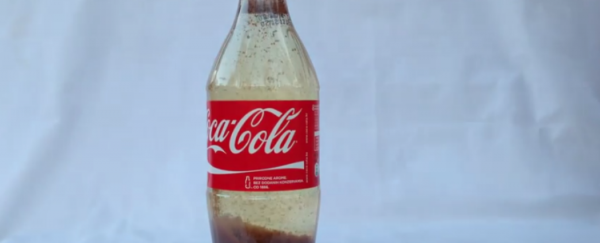It's a bit slow to get going, but the ending of this video sure is weird. Imagine if the coloured parts of Coke could somehow be precipitated down, so what you're left with is a bunch of dark particles at the bottom of the bottle, with a strange, clear liquid up the top. That's pretty much what's happening here, and the chemistry behind it is fascinating.
As Maricv 84 explains on their YouTube page, the reaction is between the phosphoric acid in the Coke, and the proteins in two tablespoons of milk, which produces a precipitate. Here's what it looks like: 3Ca + 2H3PO4 ///\\\ Ca3(PO4)2 + 3H2.
When the phosphoric acid molecules come into contact with the milk, they change, and become more dense, separating out and sinking to the bottom as a solid precipitate of curdled milk. Meanwhile, the rest of the milk and Coke mixture, because it's less dense and therefore lighter, rises to the top.
"Both items are acidic, but coca-cola more so," says Maricv 84. " In general, coca-cola has a pH of anywhere from 2.5 to 4.5 because of the phosphoric acid content, where milk has a normal pH around 6.7 - almost neutral."
This blog has even tried out the experiment using all different kids of milks. Interestingly, the reactions using water and almond milk look almost exactly the same.
Coke, the more we get to know you, the more we realise you're a total weirdo.
